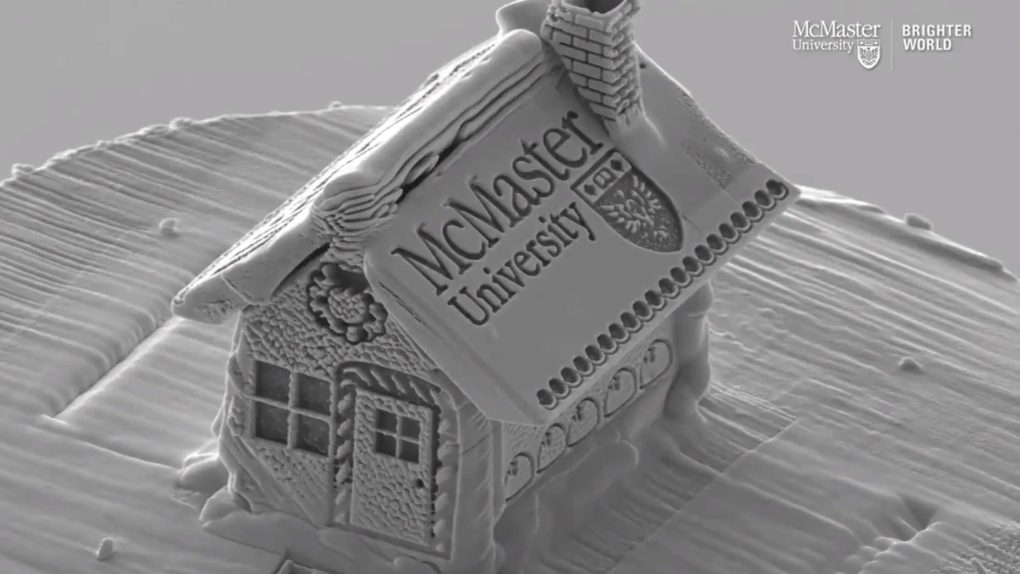Building snowmen and gingerbread houses are time-honored holiday traditions carried on for decades. Travis Casagrande of McMaster University in Ontario appreciates the holiday hype as much as anyone, but his nod to Christmas is anything but ordinary.
Using his considerable skills working with materials on a very small scale, Casagrande used a focused ion beam microscope to build a “gingerbread” house that might be the smallest ever. The elaborately decorated abode was built atop a similarly tiny snowman, both of which are completely dwarfed by something as small as a human hair.
The folks at @ccemcanada are getting in the holiday spirit by creating a teeny-tiny gingerbread house on top of a teeny-tiny snowman. Together, both decorations are hardly taller than a human hair. https://t.co/8fFc9RSDBA pic.twitter.com/hb0qgHvQJF
— McMaster University (@McMasterU) December 18, 2019
A video posted on Twitter shows the mini house from all angles, as well as the scale of the creation. As the video zooms out, we finally get an idea of just how small the whole thing is once the human hair comes into view.
“We wanted to spark some scientific curiosity. We wanted to demonstrate the techniques of our microscopes, such as this one, for researchers who are doing materials research or any other kind of research that might benefit from the use of this kind of technology,” Casagrande explains in the video. “On the bigger picture, we wanted to spark scientific curiosity for the general population, for kids who may be thinking of careers in science or even for adults.”
Casagrande and other researchers use tools like these to conduct research in a variety of fields. The technology is absolutely incredible, and it’s fun little projects like this one that can pique the interest of students who might be considering a career in a similar field.
You can’t eat it, but this might be the best gingerbread house of the year.








